What follows in the section "Crafts" is a summary of how Fae magic works.
In the next section "Dark Dealings", will do a partial re-read of "The Lighting Tree", to understand the conclusions we drew and more context. The last section, "Dancing Lessons" will dive deeper and I will speculate on what happened outside the story were shown. The Lighting Tree is required reading for this to make sense. I'll site just the page number if its from the TLT and book:chapter:page otherwise.
There are three types of fae magic, or as they would call it, fae craft or art.
| Name | Translation | Description | Example |
|---|---|---|---|
| Glammourie | Seeming | Change how things physically are | A glamoured old shirt would look new |
| Grammarie | Being | Change how you feel about something | make you love a torn shirt like your father gave it to you |
| Grammorie | Shaping | Change how things feel and seem | make you love a torn shirt like a whole shirt your father gave you |
What's more in order to perform these arts, fae magic, like sympathy relies on similarities, only in this case, its between how people feel about the things, rather then there physical properties. The next section will elaborate.
Some points of clarification
In part this will be a partial re-read of the Lighting tree with me highlighting parts. Bast will be our main character, explaining the ins and outs of his craft.
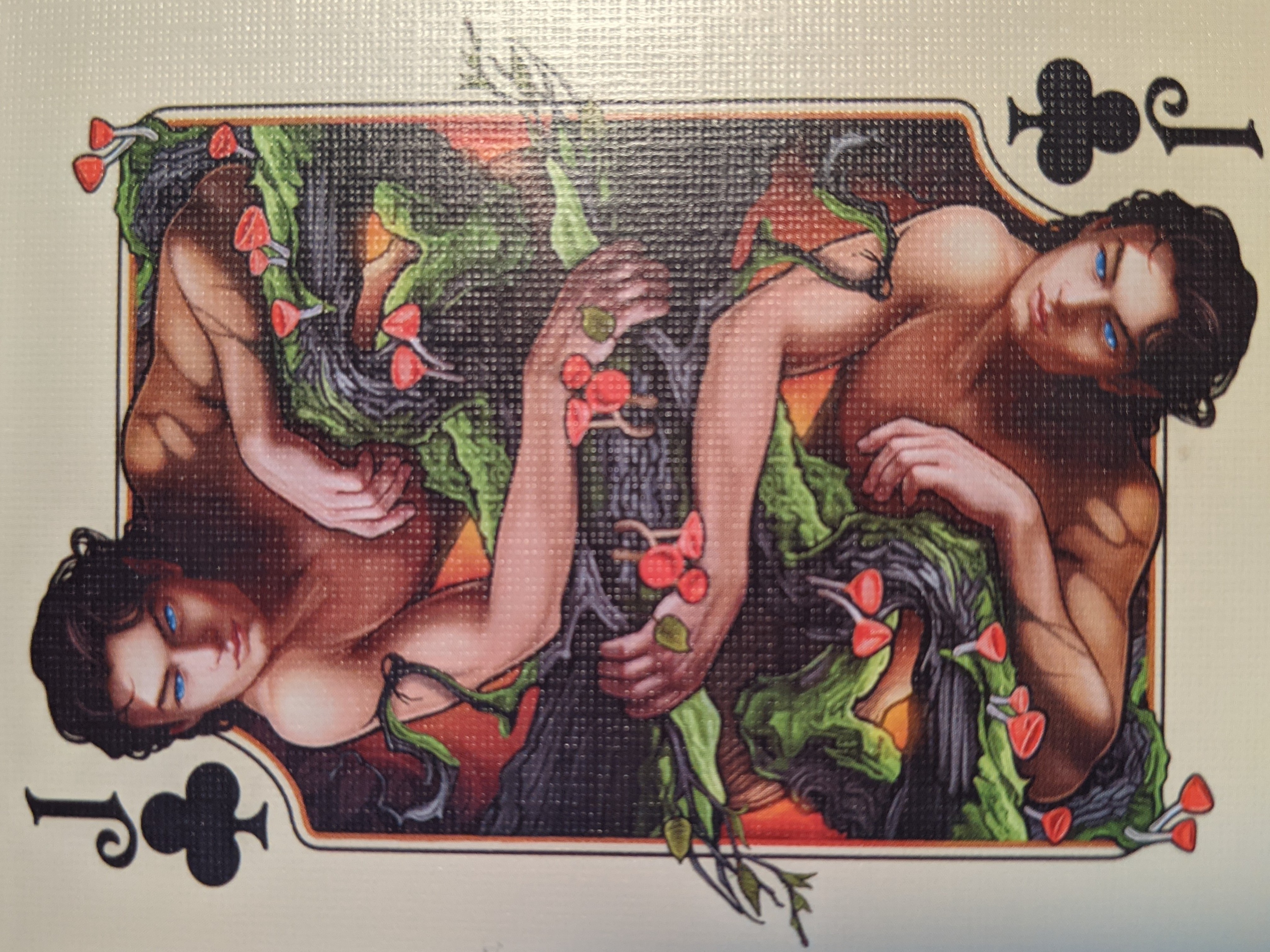
Bast, tells us, when talking to Kostrel, of two types of magic the fae do. 742:
“Okay. Here’s the bones of what I know. They don’t think of it as magic. They’d never use that term. They’ll talk of art or craft. They talk of seeming or shaping.” He looked up at the sun and pursed his lips. “But if they were being frank, and they are rarely frank, mind you, they would tell you almost everything they do is either glammourie or grammarie. Glammourie is the art of making something seem. Grammarie is the craft of making something be.”
Kostrel cleverly deduces that these two crafts could be used together. 746:
“Can you use glammourie and grammarie at the same time?”
I playful dub this "ising" but I suspect it goes by the name Shaping
Though in the book, this is never actually given a name, Furthermore, I suspect the name the fae would use is glammorie. The root being g*am being craft/art/magic while the later half morie clarifying what type. The differences in the root words gram and glam relate to how there used. gram means measure, which you have to do when doing grammarie. glam is akin charm as in, your performance matters in the potency of the craft. So back to my guess of glammorie. I'm not sure of the root really, but the reason for morie is from working backwards from the sentence chiseled above the doors to the archives. Vorfelan Rhinata Morie NOTW:36:237
As I approached the Archives, its grey, windowless surface reminded me of an immense greystone. It was hard to believe after all the years of waiting that I was finally there. I circled around it until I found the entrance, a massive pair of stone doors standing wide open. Over them, chiseled deep into the stone, were the words Vorfelan Rhinata Morie. I didn’t recognize the language. It wasn’t Siaru ... maybe Yllish, or Temic. Yet another question I needed answers for.
Wil gives us his translation. WMF:13:120:
“The desire for knowledge shapes a man,” he said. “Or something close to that.”
Rhinata shares a common root with Rhinna, a flower and panacea. As well as Rhinta, which the Tempi explains is a "bad thing". TMWF:124:817
“A bad thing. A man who is more than a man, yet less than a man.”
I can't confidently break down Vorefelan, but I suspect given how its used on the archives, wil's translation and how the word "avoi" is used by the Skindancer that "vo" is close to "want" or "desire".
So I purpose roughly that Vorefelan is desire and knowledge, Rhinata is the man who is changed and Morie could fit as shaping.
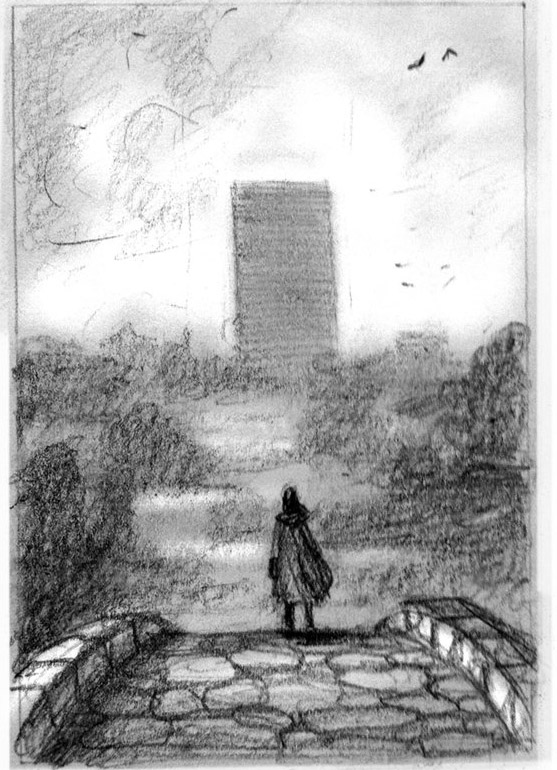
So we have some words and a rough outline:
We also need to build a sense for each of these. First off, the list of above also indicates ease of use. As an example of the first, Bast tell us that turning led into gold is glammourie/seeming. Bast explains. 724:
“Glammourie is easier (then grammarie). They can make a thing seem other than it is. They could make a white shirt seem like it was blue. Or a torn shirt seem like it was whole. Most of the folk have at least a scrap of this art. Enough to hide themselves from mortal eyes. If their hair was all of silver-white, their glammourie could make it look as black as night.”
Note that "Silver-white to black as night" would work in reverse. Likely, this works with eye color as well. Colors are easier to change then the feelings those eyes invoke.
So the more alike things are, and the better you are at understanding them, the more easily you can use glammourie to make them seem similar. A renowned chief can substitute ingredients with some ease and convince everyone nothing was amiss as long as they know the chemistry.
Grammarie is harder for bast to describe. 742:
Grammarie is about …shifting. It’s about making something into more of what it already is.”
In short, Grammarie is about changing the feelings people have about something. Bast uses the example of transferring the sentimental value Krostrel feels towards his knife, to any knife, such that anyone that looks on it feels that way. It's making taking the metaphysical feelings we apply to things and transferring them as if they were attributes. A modern day example is when a young beautiful woman smiles at you while a list of side effects from a medication scroll down a page. Those things are not related, but the company would dearly love it if you believed it was so.
Finally, Grammorie is changing how something seems and how people feel about it. We have to guess here, do we say this truly changes it? Or do we say that it puts it in a prefect prison? Is there a meaningful difference between the two?
To the last I say there isn't to any but the most careful observers. Like a glass overflowing that never seems to quench your thirst, these things might have a hollowness about them yet seem full.
Will cover Bast main use of the art here. A dark example and complex, but worth the effort.
Recall, from the story, that Rike says he will repay Bast triple for sending Jassom, his father, far away, so he can't hurt (physically and emotionally) his family anymore. Bast agrees and asks him for river stone. 758:
Bast pointed at the stream. “Find a river stone with a hole in it and bring it to me.
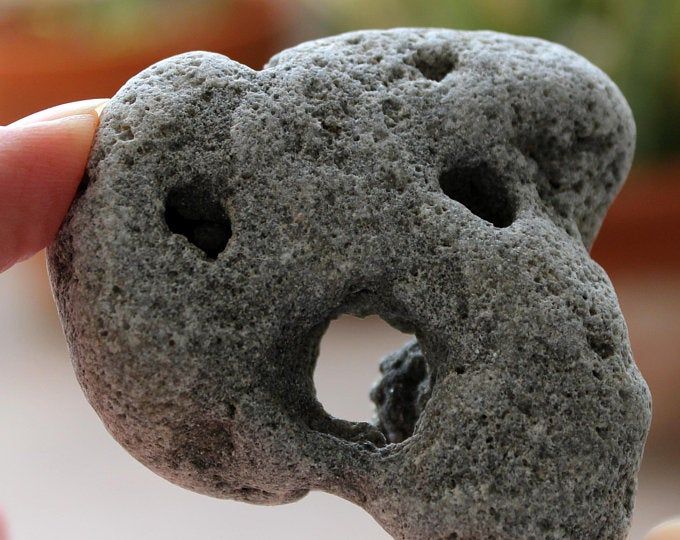
But the physical item it self isn't all that matters, the finding matters to:
“You have to be the one to find it,” he said. “It can’t be anyone else. And you need to find it dry on the shore.
Bast then asks for a needle. 766:
“Now we need a needle. But it has to be borrowed from a house where no men live.”
But not just any needle. One that is borrowed and again, how its acquired matters:
“And you have to borrow it. You can’t steal it or buy it. She has to lend it to you.”
Between Rike finding the pin and returning, Bast seduces Rike's mother Nettie and they sing a song together, I think you know the tune.
So after Bast sleeps with Nettie, Rike returns with the needle Bast asked him for. Bast leads him to the greystone, the location matters. He tells Rick that to send his father away, Rike must drop his blood, because its like his fathers, through the river stone. Bast mentions this wouldn't work on an animal because it only desires, the magic only work on those that have empathy, think ahead, that are civilized. He also says the charm will only work for one person and is startled when Bast demand that me his mother because he is worried that he will be wrong like his father. It's worth re-reading this moment. This is no fairy tale, this is flesh and blood with bone beneath. TLT::776
“He’ll go far away. You have my word—” “NO!” Rike said, his face going red and angry. “What if sending him isn’t enough? What if I grow up like my da? I get so …” His voice choked off, and his eyes started to leak tears. “I’m not good. I know it. I know better than anyone. Like you said. I got his blood in me. She needs to be safe from me. If I grow up twisted up and bad, she needs the charm to … she needs something to make me go a—” Rike clenched his teeth, unable to continue. Bast reached out and took hold of the boy’s shoulder. He was stiff and rigid as a plank of wood, but Bast gathered him in and put his arms around his shoulders. Gently, because he had seen the boy’s back. They stood there for a long moment, Rike stiff and tight as a bowstring, trembling like a sail tight against the wind. “Rike,” Bast said softly. “You’re a good boy. Do you know that?” The boy bent then, sagged against Bast and seemed like he would break himself apart with sobbing. His face was pressed into Bast’s stomach and he said something, but it was muffled and disjointed. Bast made a soft crooning sound of the sort you’d use to calm a horse or soothe a hive of restless bees. The storm passed, and Rike stepped quickly away...
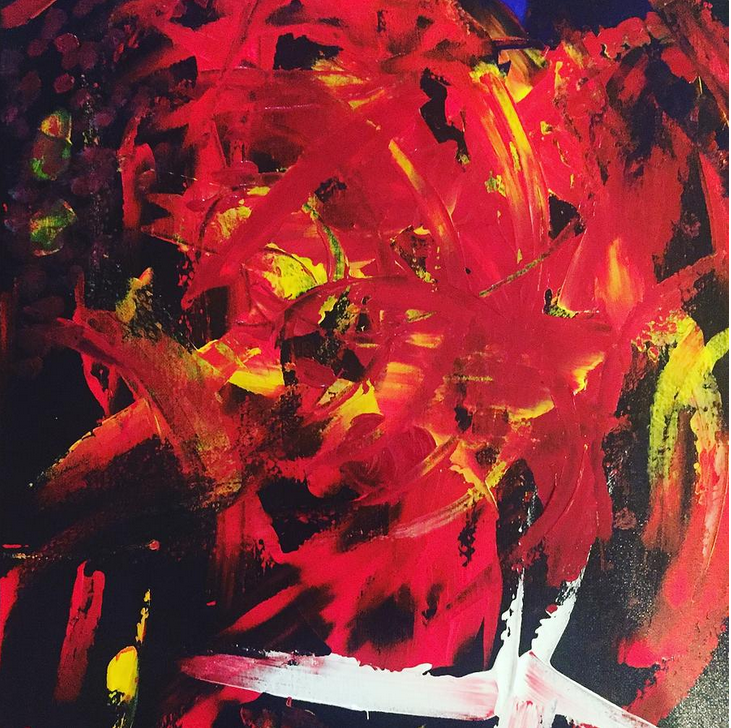
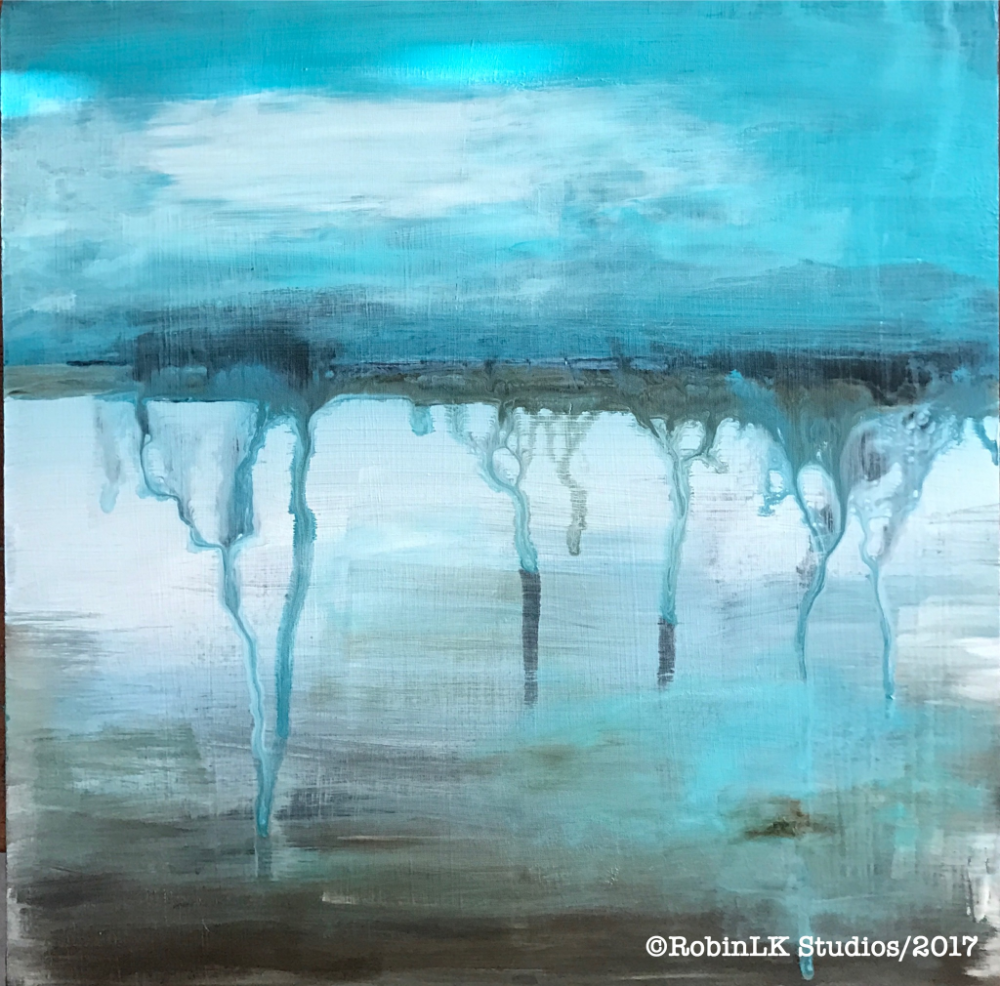
This moment might be the hinge on which the world turns. Bast decides to split the cost with Rike and add his blood to the pact. But more then that he tells a pretty lie to assure Rike that he wont be like his father:
“When you give it to her, you have to tell her that you made it for her because you love her.” The boy looked uncomfortable, as if he were trying to swallow a stone. “It’s essential for the magic,” Bast said firmly. “And then, if you want to make the magic stronger, you need to tell her every day. Once in the morning and once at night.”
Then Rike and Bast put a drop of blood through the stone. TLT:778:
Rike braced the stone with his other hand. Bast turned his finger, and the drop of blood hung in the air for a moment before falling straight through the hole to strike the greystone underneath. There was no sound. No stirring in the air. No distant thunder. If anything, it seemed there was a half second of perfect brick-heavy silence in the air. But it was probably nothing more than a brief pause in the wind.
Finally, Bast tells him to rub the wax (honeycomb) into the stone and stay with the stone on a high hill until sunset fades:
“Is that it?” Rike asked after a moment, clearly expecting something more. “Yup,” Bast said, licking the blood from his finger with a red, red tongue. Then he worked his mouth a little and spat out the wax he had been chewing. He rolled it between his fingers and handed it to the boy. “Rub this into the stone, then take it to the top of the highest hill you can find. Stay there until the last of the sunset fades, and then give to her tonight.”
Note he had promised the honey comb to a girl in the village, if she would bring him twenty perfect acorns.
What goes into fae magic? Honey wax, River Stones, and Blood? No. Those are simple things, Teccam tells us the true cost. TWMF:51:364
It’s like what Teccam wrote, ‘The cost of a loaf is a simple thing, and so a loaf is often sought ...’ but some things are past valuing: laughter, land, and love are never bought.
It's important that you form an opion about how Fae perform their craft going further. So that when you see it again latter, you have some sense of whats possible. The physical ingredients are not the fuel, its feeling the being of the things. What they Stand for, who found them and what they mean to them. Angry rocks, happy honey.
The order of events in Rike's story arch look like this:
You should be turning several important questions around in your head.
Discounting the idea that Jessom just happens to get some of Crazy Martins liquor, get drunk off it, and stumble off LittleCliff all on is own.
And that, shy, sad Nettie turns out to be such a force in the sheets that Bast is limping. I think we can safely assume Bast played a role in Jessoms accident and somehow get got hurt.
But how?
Remember, the Faes craft works similar to sympathy, the more alike two things are, the easier they are to bring together. e.g a pretty fae boy might use glammourie to seem like pretty girl. Icy dark eyes might look like chilly blue ones.
Glamour was second nature. It was just making folk see what they wanted to see. Fooling folk was simple as singing. Tricking folk and telling lies, it was like breathing.
Were going to break this into two parts. First cover the physical items, second will cover the more powerful symbolic ones.
The three physical items Bast uses in the craft:
I'll say that I'm not sure how much the needle matters as Bast seems to mostly be concerned with how long it will take Rike to get it. But lets assume it matters a bit. Bast wants a needle from a house with no men. That's sort of what Rike wants, he is a boy, his father a man, no man would mean his father has to leave. It should be obvious this could force Rike away later in life however. As well as his brothers.
The honey wax Bast gets from Nettie, a gentle men would say it was given, a cynic might say traded, a monster would have taken it. The feeling matters, it was given. Does it represent sex? love? A bit of both most likely.
I'm not going to cover the river stone here. It's part of a larger puzzle, that I cover in the larger Warrens Theory. That brings us to this:
| Item | How | Represents | Purpose |
|---|---|---|---|
| River Stone | ? | ? | ? |
| Needle | Borrowed | No men | To send Ricks father away |
| Honey Wax | Given | Romance | Give Remaining Williams some Joy |
However that's not all the magic entails. To discuss the other parts, we need to cover two things that happened off screen.
First, I'll claim that when Bast visits Martin's Still he wrecks the place. This is later blamed on Jessom. Someone wrecks the place up, It makes sense it was Bast.
The second event is a lot harder to understand. We should first talk about when Jessom fell off LittleCliff. We know it was after the deal and before the commentary about it at the Inn. But when was it likely to have happened? Well, you might say after Bast dropped his blood through the river stone. Otherwise, what was the point of that step? Will return to its significance later.
However, the story really implies that it happened after sleeping with Nettie and sending the boy and girl to LittleCliff. Bast isn't hurt before we see him with Nettie, he is after. We already discounted love play as the reason. Furthermore, I suggest he sends the children to LittleCliff to find Bast.
I have circled this topic for a reason, because the events leading up to it matter.
Bast has power over Jessom, will discuss shortly how he uses it, but lets be clear about how it has it.
He has permission from Jessoms Blood. His own son has asked this of him, and is willing to pay triple. This alone might have been enough but Bast strengthens the bond further. Nettie, Jessoms wife gives her self over to Bast after a couple kind words and the hope of something sweet in life. It should go without saying that Jessom and not Nettie is at fault here. Whats more, they even do it at his own home.
That's Blood, Love and Land.
Three ways Bast has filled the hole Jessom has left in the world. And make no mistake, Jessom is a hole, a hallow. Something less then a man. No, he is no Chandrian, he wields no magical power, but thats not what make the seven terrible. Not there strengthen, but there emptiness. The darkness and terrible space they leave in the world.
So Jessom is hallow, he fills himself with drink, with anger. Bast is now more of what Jessom should be then he has been in years. A small thing really, to fill an empty glass that you own and to send it shambling off a cliff to shatter like glass below.
we know bast can dance:
He almost looked like he were … what? Frolicking? Dancing? Small matter.
He was dark, and tall, and lovely. When he walked he looked like he was dancing.
He looked like he were dancing.
I say he skin danced Jessom off that cliff. That's why Bast comes back looking like he fell off the cliff because he did, as Jessom. Further more Jessom left right after he recovered. Why would he? Because Bast imprinted his own memories of wrecking Martins Sill and stealing his liquor in Jessom. He woke thinking he had done it. If he hadn't, why flee town? If bast just shoved him or skindanced him off, why did Bast trouble including the bit about Martin? If Jessom thought bast was involved, why not tell anyone else? Even as he ran off? There are no certain answers here, but I think it fits.
In the interest of fairness. It's also possible that:
But those pieces don't explain what happened to Jessom. I think they are covers he can use to explain his injuries without lying outright.
A major counter to the idea that Bast can skin dance would be that Bast tells Kvothe he doesn't know how it works, when asked by Chronicler how they can be sure it hand't changed bodies. MWF:2:14
Why didn’t it hop into one of us?”
“You’re asking me?” He laughed incredulously. “I have no idea. Anpauen. The last of the dancers were hunted down hundreds of years ago. Long before my time. I’ve just heard stories.”
Which could mean, among other things, that Bast doesn't know if it jumped, but does know about skin dancing. However, he says rather directly that the dancers were hunted down long ago. Which would seem to be an outright lie if he was capable of doing it himself.It's possible he doesn't consider what happened antagonistic in the Inn fight to be similar to the craft he worked over Jessom. It's possible the inflicted commander was more crudely and forcefully controlled, the dark inky fluid being used in the process.
Which would leave us to spin a story around what Bast did to Jessom that relies more on glammourie and maybe good old fashion threats.
This is a good start to understanding what the Fae's craft. But there is much more to cover, we didn't even touch on every example in TLT. Not to mention Felurian, and Auri who both could give insights. Likely the deserve there own space though, I presumptuously said I would provide a summery, as if, as if you could capture a summers day in a bottle. It would also be worth a reread where we look out for any subtle uses, now that we know what clues to look for.
Bast is worried his young clever friend might ask how to break fae magic. So we should be on the look out for that to. As a starting point, it would seem "shifting light" might undo glammourie as implied here:
Beneath the water, a careful observer might note the young man’s legs looked somewhat … odd. But it was shady there, and everyone knows that water bends light strangely, making things look other than they are. But it was shady there, and everyone knows that water bends light strangely, making things look other than they are.
-- Bast TLT:749
Maybe the key is randomness?
Most art is from world builders.